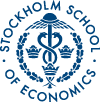No 96: Two Stylized Facts and the Garch (1,1) Model
Timo Teräsvirta ()
Additional contact information
Timo Teräsvirta: Department of Economic Statistics, Postal: Stockholm School of Economics, Box 6501, 113 83 Stockholm, Sweden.
Abstract: Many high frequency economic or financial time series display two empirical characteristics: high kurtosis and positive autocorrelation in the centred and squared observations. The first- order autocorrelation is typically low, and the autocorrelation function decays slowly. These series are often modelled with a GARCH (1,1) model. In this paper it is shown why such a model with normal errors cannot adequately characterize these stylized facts. The same seems true for the IGARCH (1,1)model. It is also shown why one can improve the situation by replacing the normal error distribution by a leptokurtic one, although this may not provide a complete remedy.
Keywords: Conditional heteroskedasticity; moment condition; IGARCH; t-distribution; high frequency economic data
27 pages, January 1996
Questions (including download problems) about the papers in this series should be directed to Helena Lundin ()
Report other problems with accessing this service to Sune Karlsson ().
RePEc:hhs:hastef:0096This page generated on 2024-09-13 22:19:40.

